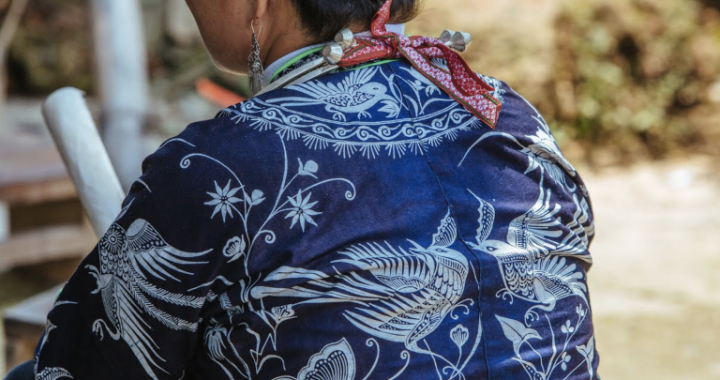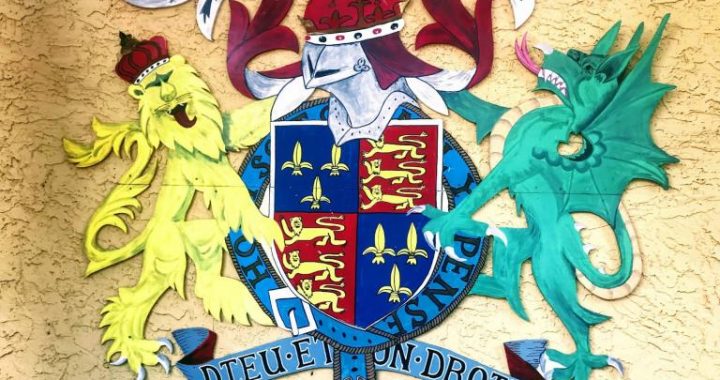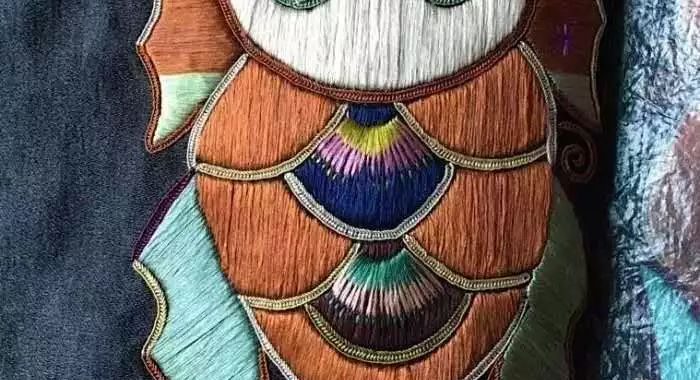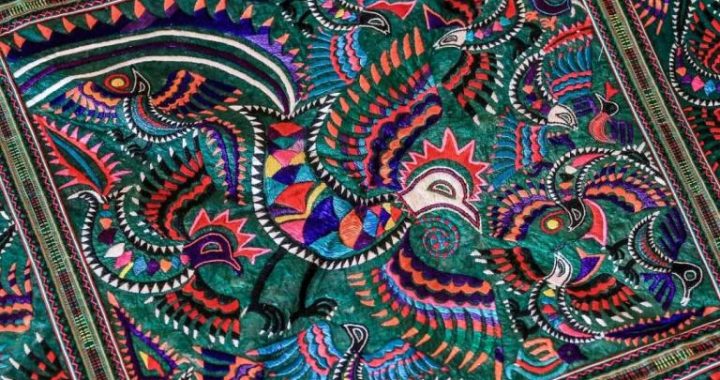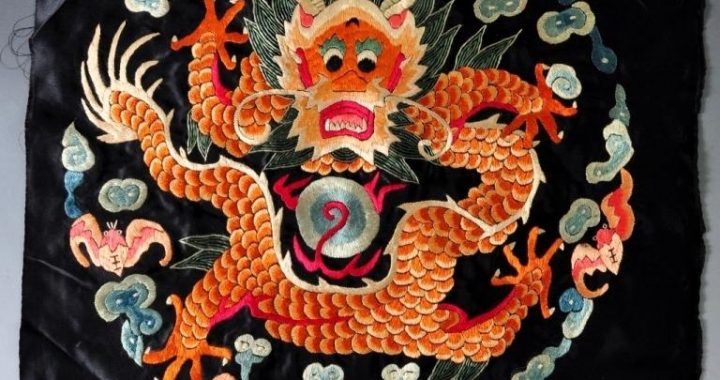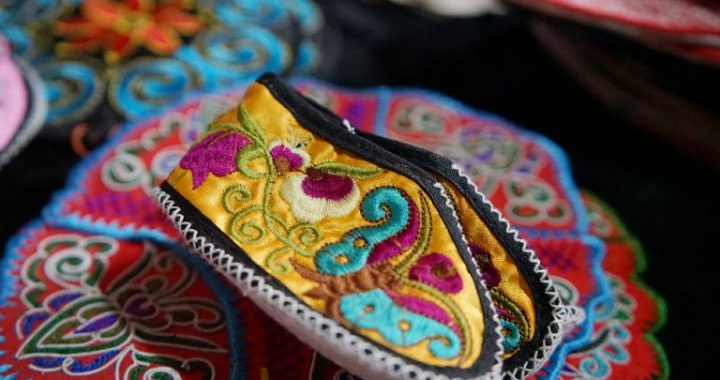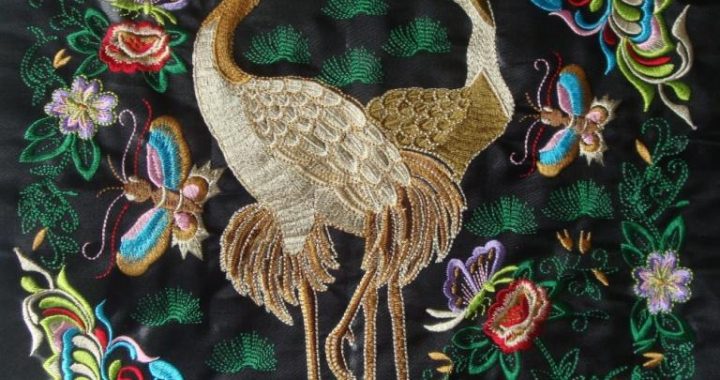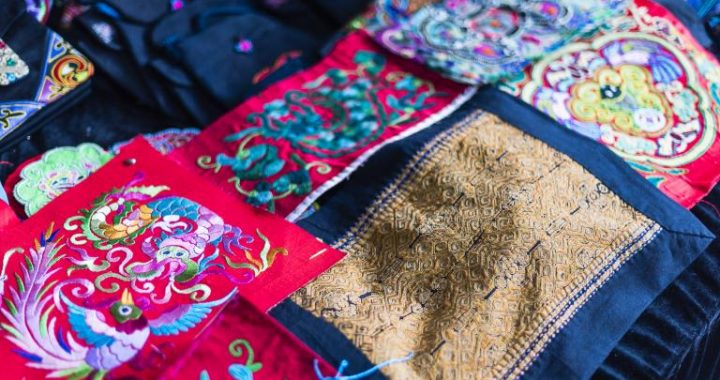A Carving-like Weaving-Kesi
2 min readKesi, literally”carving silk”, first appeared in the Tang dynasty, and flourished in the Song dynasty. It was considered one of the most wonderful silk species in ancient China, boasting three-dimensional patterns with clear-cut rims, as if inlaid onto the textile. Generally, silk textiles are characterized by continuous wefts and warps, while Kesi is weaved with continuous warps but disconnected wefts of different colors. The main advantage of such technique is its unlimited presentation of colors and patterns on textiles.
The process of Kesi manufacturing is very interesting. Warp threads are bound onto a comb-like loom, while many small shuttles with threads of different colorsare put on two sides of the loom for weaving the weft. During weaving process, the sample pattern is put under the warp thread for the weaver to draw its contour ontothe warp, and the multiple small shuttles are used at different sections to weave in weft threads of different colors. Patterns on a finished Kesi textile look exactly the same from both sides of the product.
As it was extremely time and labor consuming to produce a piece of Kesi, people in the past commented that one inch of Kesi fabric was worth one inch of gold, andit was said that it took a whole year to produce just one female garment of Kesi!
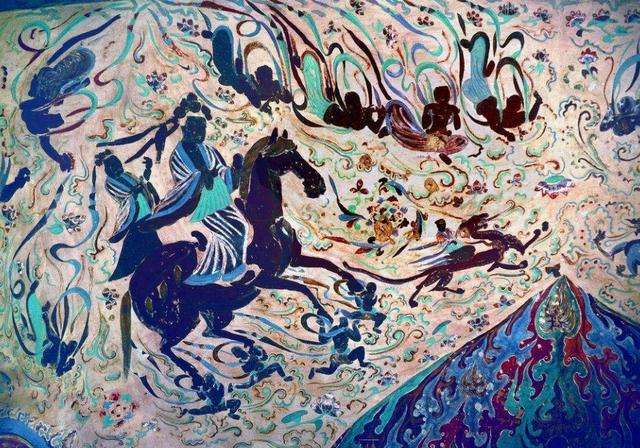
According to its function, Kesi products can be divided as practical and aesthetical, while in the Song dynasty, it was mainly applied in two fields. One was for mounting calligraphies and paintings. Due to the favor of Song emperors towards calligraphy and painting, there was an imperial Kesi workshop particularly producing Kesi textiles for mounting. The other kind of Kesi works imitated paintings themselves, and the most reputed artists of such art were Zhu Kerou and Shen Zifan of the Southern Song dynasty.
Zhu Kerou was born in Songjiang (modern-day a district of Shanghai), and lived avery fruitful art life. On her Kesi work Camellia, soft red camellia is dotted on the blue ground against green leaves, with a butterfly flying over the flower.
Through her very skilful Kesi technique, even the worm-eaten rim on one leaf is marvelously depicted. The Ducks in Lotus Pond is one of her representative works:A flock of duck are frolicking in a pond of blooming lotus, while egrets and kingfishers perch on the bank, and the whole picture is harmoniously interspersed with insects and peculiar rocks.
Shen Zifan, born in Wujun (modern-day Suzhou), was another master of Kesi. One of his masterpieces Magpies on Plum Blossom, with graceful plum blossoms and a bold trunk perched with two lonely magpies, vividly presents a kind of sad feeling.
Through exquisite maneuver of shuttles by Kesi artists, Kesi works look exactly the same as the authentic calligraphy and paintings, making it hard for many people to believe that they are weaved through shuttles. The value of their silk textiles even surpasses the original paintings and calligraphies.
